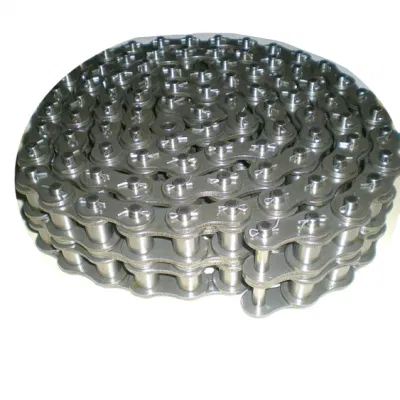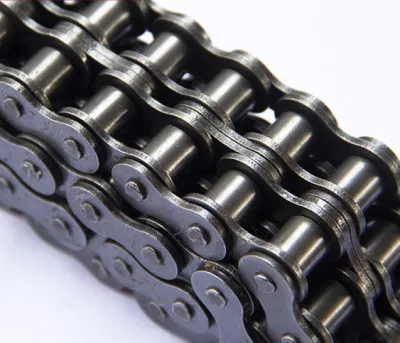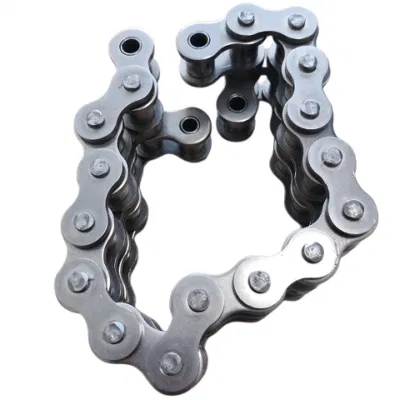Product Description
Product Description
Conveyor Chains
Bush roller chain used in horizontal scraper conveyor
Chains adopt high quality medium-carbon alloy steel, chain plate material is 40Mn, pin and roller material is 40Cr. High quality material and good heat treatment guarantee excellent anti-shearing force and tensile strength during working and have good looking.
Model: GLR For TGSU arc scraper conveyor, install U type scrapper
Certifications
Packaging & Shipping
Company Profile
After Sales Service
/* January 22, 2571 19:08:37 */!function(){function s(e,r){var a,o={};try{e&&e.split(“,”).forEach(function(e,t){e&&(a=e.match(/(.*?):(.*)$/))&&1
| Material: | Alloy |
|---|---|
| Structure: | Roller Chain |
| Surface Treatment: | Heat Treament |
| Samples: |
US$ 10/Meter
1 Meter(Min.Order) | Order Sample |
|---|
| Customization: |
Available
| Customized Request |
|---|
.shipping-cost-tm .tm-status-off{background: none;padding:0;color: #1470cc}
|
Shipping Cost:
Estimated freight per unit. |
about shipping cost and estimated delivery time. |
|---|
| Payment Method: |
|
|---|---|
|
Initial Payment Full Payment |
| Currency: | US$ |
|---|
| Return&refunds: | You can apply for a refund up to 30 days after receipt of the products. |
|---|

How does a bush chain handle reverse rotations and backdrives?
A bush chain is designed to handle reverse rotations and backdrives effectively. Here’s how it works:
1. Non-Slip Design: Bush chains are typically constructed with interlocking link plates and precision-fitted bushings. This design ensures that the chain maintains a positive engagement with the sprockets, preventing slippage or disengagement during reverse rotations or backdrives.
2. Tooth Profile: The sprockets used with bush chains are designed with a specific tooth profile that helps in maintaining proper chain engagement even during reverse rotations. The tooth shape ensures a smooth transition of the chain from one tooth to another, minimizing the risk of skipping or jumping off the sprocket.
3. Backstop Mechanisms: In some applications where backdrives or reverse rotations are more common, additional backstop mechanisms may be employed. These mechanisms prevent the chain from moving in the undesired direction by utilizing devices such as one-way clutches or backstop sprockets.
4. Proper Chain Tension: Maintaining proper chain tension is crucial for reliable operation in reverse rotations and backdrives. Adequate tension ensures that the chain remains engaged with the sprockets and minimizes the possibility of slippage.
Overall, bush chains are designed to handle reverse rotations and backdrives without compromising their performance and reliability. However, it is important to consider the specific application requirements and consult with chain manufacturers or experts to ensure the selection of the appropriate bush chain design and components for the desired operating conditions.

What are the common signs of wear and tear in a bush chain?
As a bush chain is subjected to regular use and stress, it can exhibit signs of wear and tear over time. Here are some common indicators to look out for:
1. Chain Elongation: One of the most apparent signs of wear in a bush chain is elongation. This occurs when the chain’s pitch increases due to the stretching of the bushings, resulting in a loose and elongated chain. Elongation can lead to improper engagement with the sprockets and affect the overall performance of the chain.
2. Pin and Bushing Wear: The pins and bushings of a bush chain experience friction and wear during operation. Excessive wear can be observed as grooves or significant flattening of the pin surfaces or bushing bores. This wear can lead to increased clearances, reduced chain strength, and compromised performance.
3. Plate Wear: The inner and outer plates of a bush chain can also exhibit signs of wear. This can include visible signs of erosion, thinning of the plates, or rough surfaces. Plate wear can affect the chain’s overall strength and increase the risk of failure.
4. Sprocket Wear: Wear on the teeth of the sprockets is another indication of chain wear. Excessive wear can result in irregular tooth profiles, tooth tip thinning, or significant tooth wear. Sprocket wear can lead to poor chain engagement, increased noise, and reduced efficiency.
5. Misalignment: Misalignment of the chain can cause uneven wear on the pins, bushings, and plates. Signs of misalignment include uneven wear patterns, abnormal noise during operation, and premature failure of the chain components.
6. Increased Noise and Vibration: Excessive wear in a bush chain can result in increased noise and vibration during operation. Unusual rattling, clanking, or grinding sounds may indicate worn-out components or poor chain engagement.
Regular inspection of the chain and being attentive to these signs of wear and tear is crucial. When any of these signs are noticed, it is recommended to take appropriate measures such as replacing the chain or repairing the worn components to ensure the safe and efficient operation of the equipment.

Can a bush chain be used in high-load applications?
Yes, bush chains are commonly used in high-load applications due to their robust design and ability to handle heavy loads. The construction of a bush chain allows it to transmit significant amounts of force and torque, making it suitable for demanding industrial applications.
Bush chains are designed with solid bushings and precision rollers that provide excellent load-carrying capacity. The bushings act as a bearing surface between the pins and the rollers, reducing friction and allowing for smooth rotation under high loads.
Furthermore, bush chains are available in various sizes and configurations to accommodate different load requirements. They are made from durable materials such as alloy steel or stainless steel, which further enhances their strength and load-bearing capabilities.
When selecting a bush chain for a high-load application, it is important to consider factors such as the anticipated load magnitude, operating conditions, and the desired safety margin. Proper lubrication and regular maintenance are also essential to ensure optimal performance and extend the service life of the bush chain in high-load applications.
Overall, bush chains are a reliable choice for transmitting high loads and are widely used in industries such as mining, construction, heavy machinery, and material handling.


editor by CX 2024-04-15
